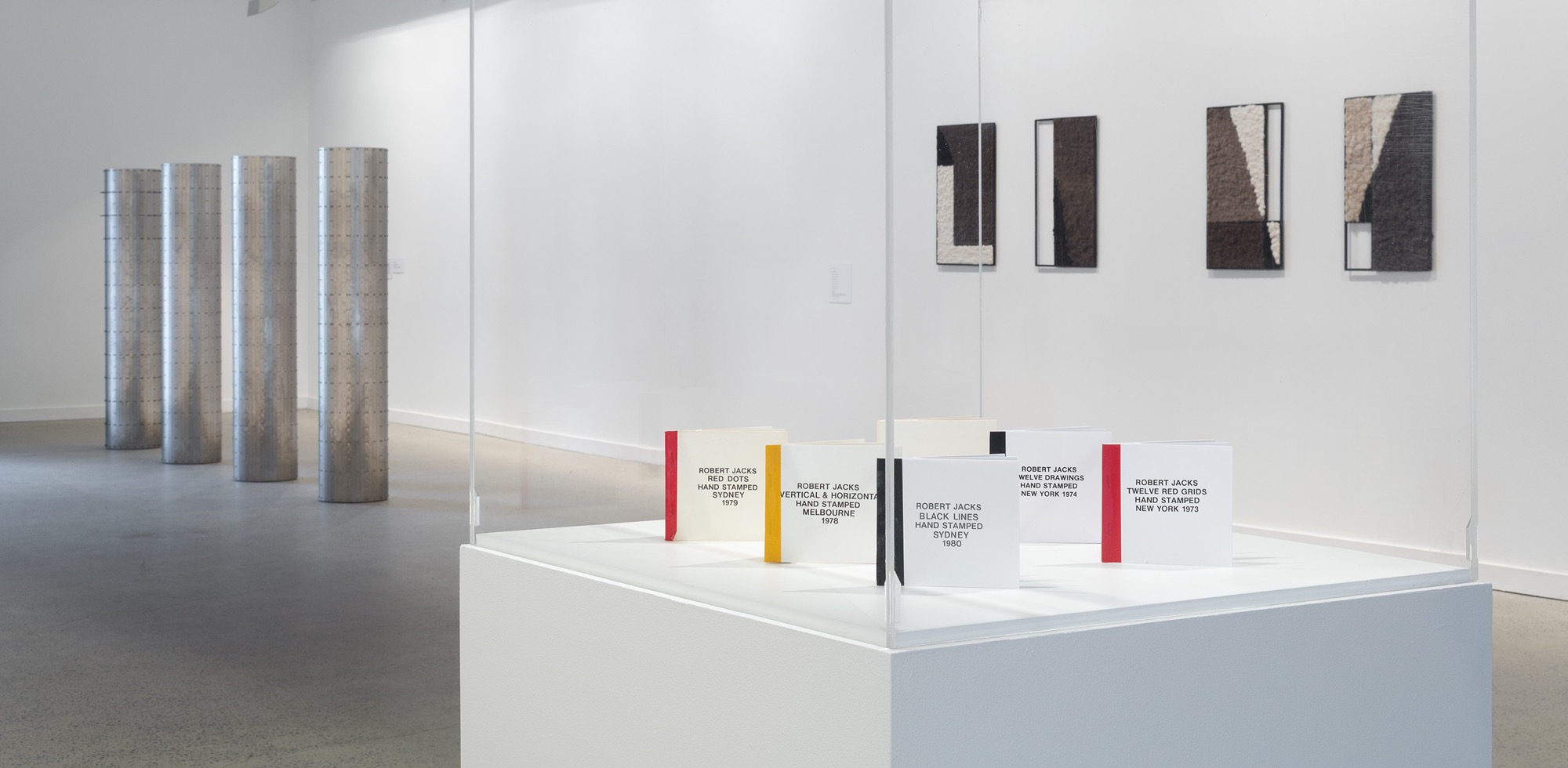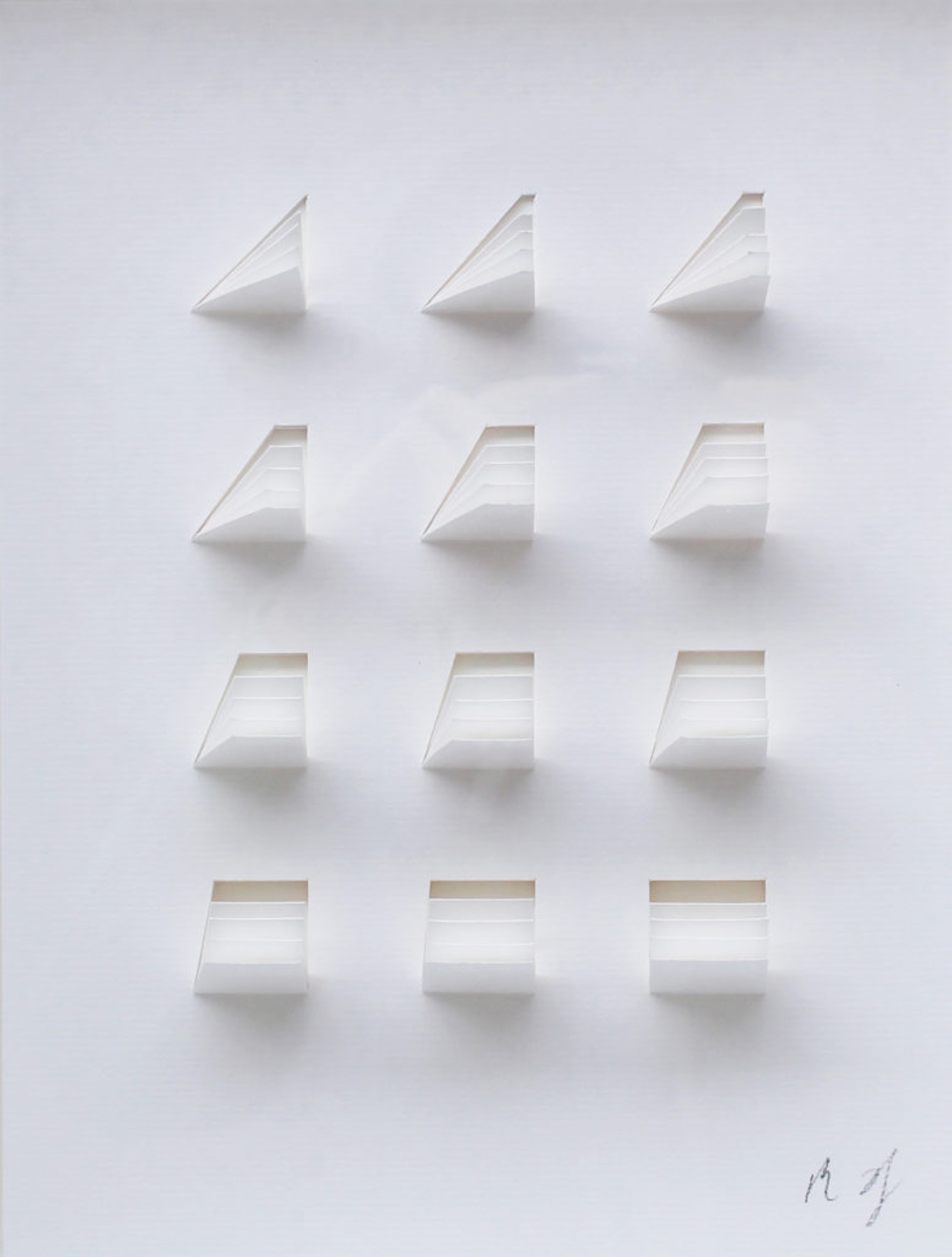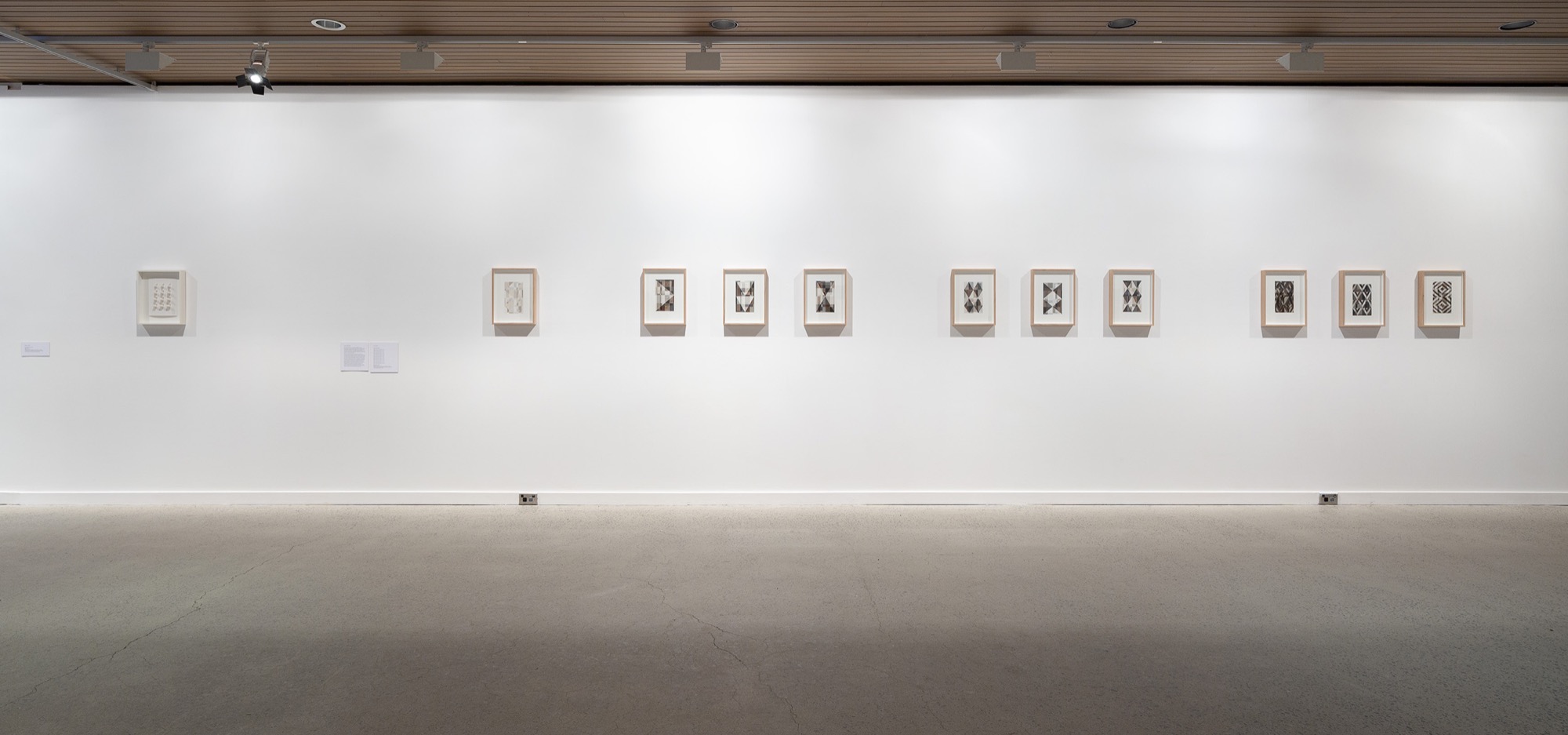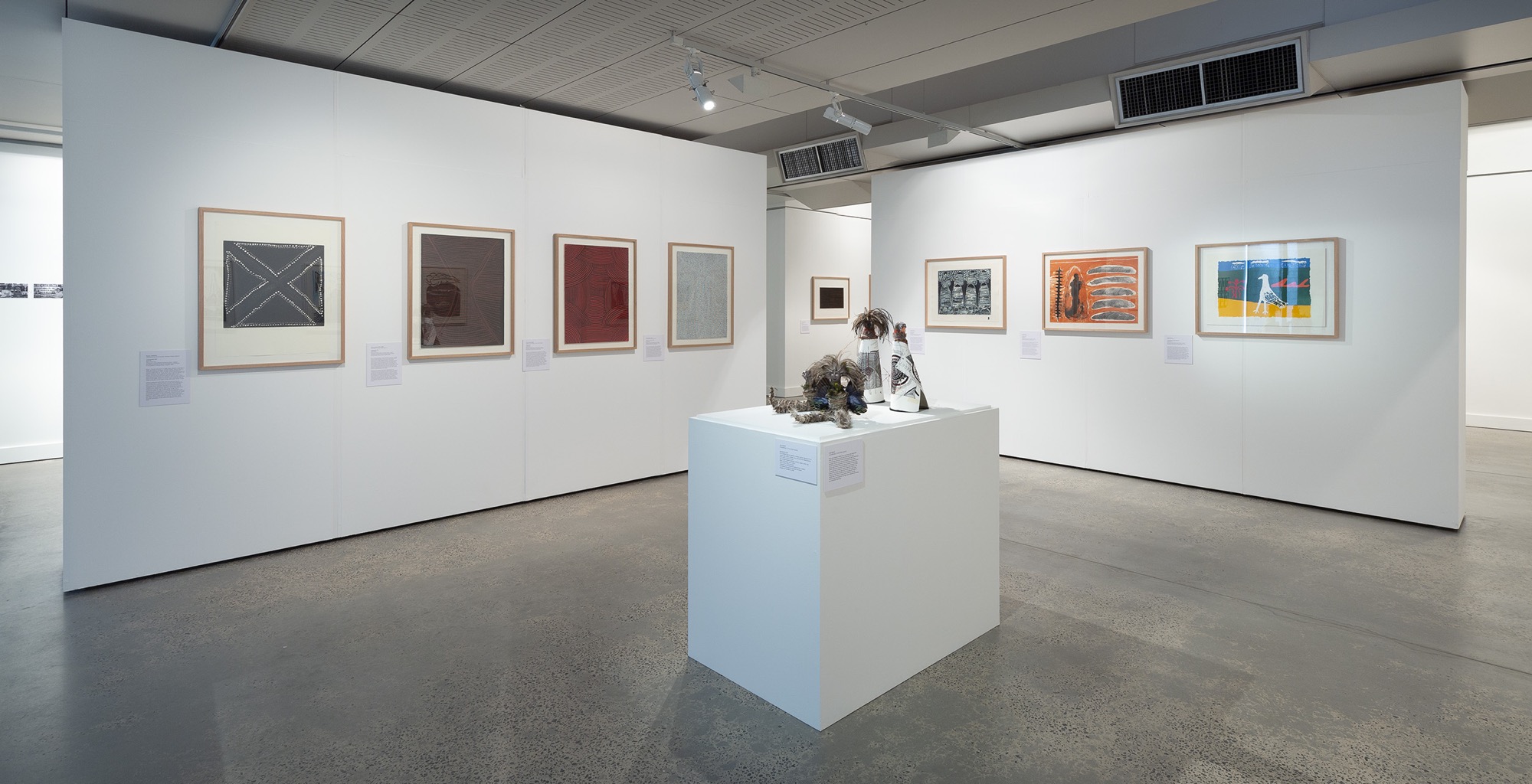SERIAL
Aneta Trajkoski
The 'serial,' or series, adopts numerous contemporary forms: from binge-worthy television series, countless iterations of Podcasts, ever-expanding adaptations of franchise cinema, to the systematic tendencies that were examined in the recent exhibition A New Order at Buxton Contemporary. Do the conditions of a fast-moving and increasingly chaotic world urge us to seek reprieve, order and familiarity? Is the series a conventional constraint or a structure providing liberation? How far can we reduce systems, patterns and readings without losing meaning? The current group exhibition Serial at McClelland Sculpture Park and Gallery probes notions of seriality as they arise in process, history, repetition and communication. The exhibition includes recent acquisitions and works from McClelland's collection that are presented across two galleries.
As Hal Foster suggests in The Crux of Minimalism (1996), we can think of seriality as signifying a response to the socio-economic developments of the post-war period. Or as an artistic gesture that resists high modernism and mass culture. It can also be an aesthetic response, or language, emerging from structuralism, post-structuralism and system aesthetics, where objects, lines, shapes, patterns, materials or concepts negotiate an implied system. In addition to these ideas, this exhibition also suggests that the process of seriality extends beyond Western Modernism to visual languages that intersect history, storytelling, memory and ceremony. In this way, serialism, networks, associations, repetition, grids, orders, patterns and narratives not only materialise in the individual works themselves but emerge through the grouping of works across both galleries.

The works in the front gallery by Robert Jacks, Adrian Page and Sanné Mestrom speak to serial iteration as a convention of modernism: as investigations of the grid, line, shapes, forms, textures and mathematics. Robert Jacks' 45–90 paper cut (2012) (a remake of a 1971 work) represents Jacks' 'American years' where the grid became his primary focus. The piece charts the progression from a triangle to a square. The surface of four layers of white paper are cut in four consecutive rows of three, and each iteration of the cut advances the angle of the shape from 45 to 90 degrees. The paper becomes sculptural as the fold and shape of each cut-out casts a shadow on the paper beneath. The grid formation is also echoed in the arrangement of the six miniature artist books (1973-1980) and twelve Postcards hand stamped (2007) displayed in vitrines nearby.

The clean lines and precise cuts in Jacks' work converse with Mestrom's contemporary interpretation of serial form in Black painting (study). However, the preoccupation with mechanical rigor that is evident in Jacks' pieces is absent in Mestrom's nine gouache on paper works. These paintings chart the development of a grid across three iterations. Using shades of brown, the artist's hand becomes more apparent, and the accuracy of the colouring 'in-between-the-lines' diminishes, as the geometric patterns increase in detail.

The second gallery extends these formal and procedural concerns to broader approaches and conversations about nature, country, society, narrative, ceremony and technology. The implications presented here go beyond materialism and the grid alone. This gallery includes photography, sculpture and many prints by artists includingMick Kubarkku, Queenie McKenzie, Gloria Tamerre Petyarre, Kutuwulumi Purawarrumpatu, Rover Thomas, Ginger Riley, Judy Watson and Lisa Waup amongst others. The arrangement enables conversations to emerge around translation and the correspondence of the various traditions of mark-making.

For example, the lines and patterns in Gloria Tamerre Petyarre's screenprint Arnkerrthe (1997) encapsulate the energy and rhythms associated with Aboriginal ceremonies while also referencing western modernism's grid formations, repetitions and optical effects. Similarly, the dense field of white dots in Robert Ambrose Cole's Spirit II, (n.d.) create an optical effect that shifts in and out of focus.
The works by Cole, John Bulunbulun, Mick Kubarkku, Queenie McKenzie, Gloria Tamerre Petyarre, Ada Bird Petyarre, Kutuwulumi Purawarrumpatu, Ginger Riley, Rover Thomas, Turkey Tolson Tjupurrula, Ronnie Tjampitjinpa and Judy Watson are made using silkscreen, woodblock, etching and screenprinting. The serigraph printing process creates hard-edged lines and bold areas of flat, unmodulated colour, while the repetition of lines, dots, crosshatches and other techniques allows patterns to emerge in formal iterations that are anything but machine driven.
Some works deal with serialisation as a set of exchanges or communication. The eleven works by Benjamin Armstrong, from his Invisible Stories: Meditations on Port Essington series, reimagine accounts from Mark McKenna's book From the Edge: Australia's Lost Histories (2016) in the form of linocuts. These works of iridescent pigment and thick black ink interpret the cultural exchanges between indigenous peoples and white settlers in the late nineteenth century. Elizabeth Gower's Postcard Work (1977) comments on the archive, exchange and collage. The series of fourteen miniature postcards were part of a dialogue between Gower and Janine Burke. Each postcard shares an encounter from Gower's travels to art museums and biennials in Europe in 1977. The postcards are arranged in a Perspex vitrine so that the images on the postcards can be seen only as reflections in the mirror positioned underneath.

Robert Owens' archival print Endings (Kodachrome 64, No9.00, 22/07/1992) 2010 is part of a series of photographs (also entitled Endings) that comment on the supposed finality of the image. Relying on chance, Owens salvages the ends of often-discarded photographic film stubs—which he then processes to produce each image in the series. No two images are the same. The stub used to create the work on display revealsan abstract Rothko-esque composition of black, red and translucent yellow.
Andrew Browne and David Wadelton's contributions also explore archival photography. While Browne documents the changing landscape and degradation of an abandoned quarry adjacent to McClelland, Wadelton's Photographs 1970s-2000s are twenty-four snapshot-sized photographs that document the changing urban Melbourne over thirty years.
The curatorial decision to hang similar-looking works together or multiple works by the one artist is, at times, taken to the point of exhaustion. For example, eleven of Armstrong's linocuts are hung on three walls—which equates almost to a third of the gallery wall space. This is also the case with the works by Mestrom—there are two series, Black painting (study) (2014) and Black painting (2014), totalling 17 pieces in all. Although this quantitative observation seems trivial, when you are faced with works based on systems within a system, noticing these structures is inevitable. The repetitious grouping of the works—certainly Mestrom's and the arrangement of prints by Robert Ambrose Cole, Ada Bird Petyarre, Gloria Tamerre Petyarre and Rover Thomas—enables pattern and variation to emerge. And this is inherent in serial representations.

One caveat of the exhibition is that the concept of seriality does not extend beyond painting, print, craft, sculpture and photography. Although the synopsis outlines that Serial explores 'contemporary art practice,' this definition of contemporary art is limited to more traditional Western forms of art making. It does not extend to include video, new media or performance. Perhaps more accurately, and since it is a collection show, the exclusion of certain mediums of contemporary art is suggestive of McClelland's collecting strategies rather than a mirror of contemporary art more broadly.
Nevertheless, there is something invigorating and understated about Serial and its comment on the structures, systems and contexts that are inherent in art. Viewing this exhibition reminded me of the act of looking evoked by the recent Alexander Calder exhibition at the NGV—and observing interactions and connections between lines, shapes, colours and movement. It is not that the artworks in Serial engage with formal or abstract concerns alone—the works are, of course, more loaded than that. However, the order and arrangement permit associations to emerge in the artworks themselves and enables their conversation with other works in the space.
Aneta Trajkoski is a writer, researcher and academic. Aneta received her PhD (Art History) from the University of Melbourne in 2019 where she is currently a sessional lecturer and subject coordinator in Contemporary Art and Art History.


